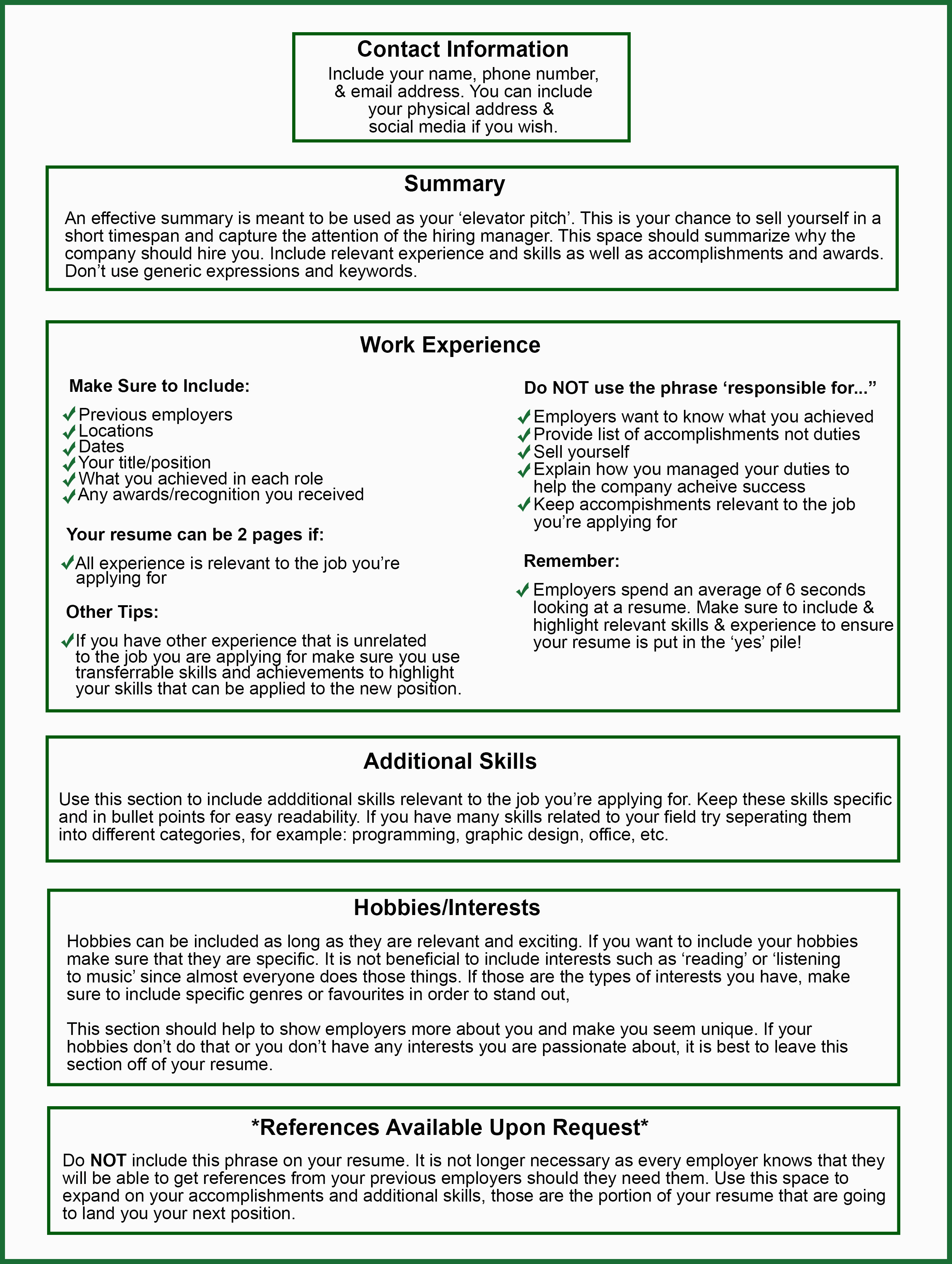It can be difficult to know where to start when creating your resume. There are so many different sources out there for resume help that it becomes overwhelming to sift through the information and pick out what to include. To help you, we’ve outlined everything you should include (and a few things you shouldn’t) in your resume.
Whether you’re starting a resume from scratch or looking to update an old resume it can be helpful to have a guide, a starting point to help gather your thoughts and determine what to include and exclude. We’ve put together a graphic below that you can reference to help determine what sections to include in your resume, why they should be there, what should be included in each section, and what isn’t necessary to include at all.
Other Tips to Consider When Writing Your Resume
- Keep your resume to bullet points and easy to read sections, it must be easy to skim
- Don’t use generic keywords when describing your accomplishments, try to come up with unique ways to describe the work you’ve done – this will help you stand out
- When sending your resume make sure the file name is relevant. Your first and last name should be included. Do not label the file ‘resume’ as hiring managers see so many resumes with that file name each day, yours can get lost in the mess
- Make your resume a PDF unless the company specifically asks for something different. This will help to avoid any font or format issues when being opened on another person’s computer.
Sources
http://epiccv.com/resume-sections/dos-and-donts-of-your-resumes-contacts-section/
http://epiccv.com/resume-sections/danger-danger-your-resume-summary-makes-you-look-boring/
https://resumegenius.com/blog/resume-help/skills-for-resume
http://epiccv.com/resume-sections/24-crucial-tips-for-work-experience-resume-section/

